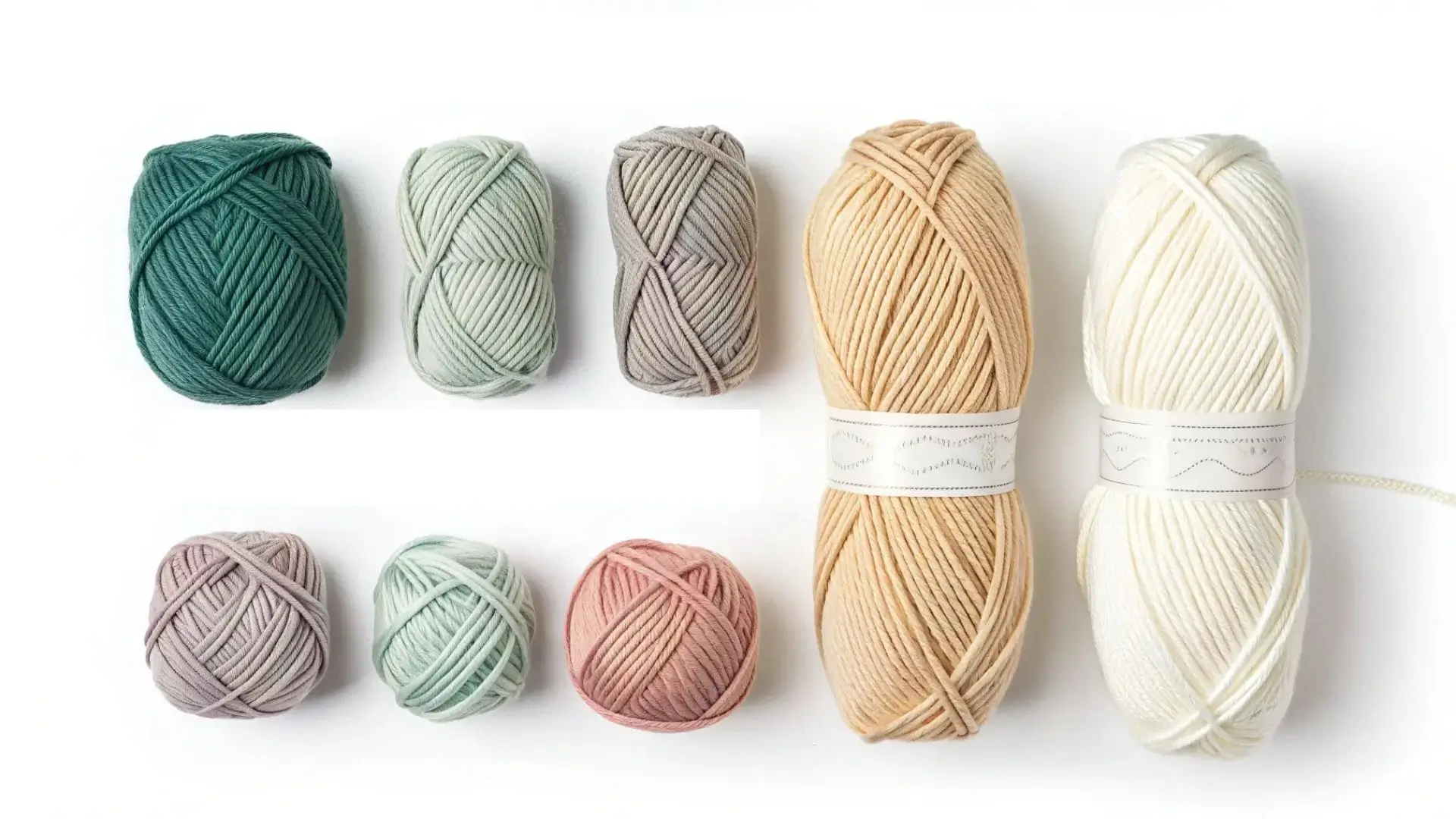Choosing the right yarn weights for your knitting or crochet project can be overwhelming, especially with so many options available. If you’re new to knitting and crochet, understanding the basic yarn terms will help you make sense of patterns and materials before you dive into selecting the perfect yarn weight.
The Craft Yarn Council (CYC) has simplified this process with a standardized yarn weights system, making it easier to follow patterns, substitute yarns, and select the best material for your creations.
In this guide, you’ll learn everything you need to know about yarn weights, from delicate lace to ultra-chunky jumbo yarns. We’ll cover:
- The CYC’s standardized yarn weights categories (0–7)
- Recommended needle/hook sizes for each weight
- Typical gauge and project ideas
- How fiber content affects your yarn choice
- Decoding yarn labels and measuring WPI (Wraps Per Inch)
If you’re new to yarn crafts, you may also enjoy reading The Ultimate Yarn Crafts Guide for a complete beginner-friendly foundation with tips, techniques, and inspiration.
The Standard Yarn Weights System: A Detailed Breakdown
The CYC’s yarn weights system is recognized internationally, providing a common language for crafters. Weights are numbered 0 (finest) to 7 (thickest), ensuring consistency across brands and patterns.
Category 0: Lace Yarn Weight
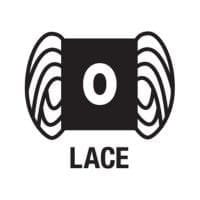
Symbol: Lace
Typical Yarns: Lace, cobweb, thread, 10-count crochet thread
Fibers: Silk, mohair, fine merino, cotton
Characteristics: Delicate, lightweight, excellent drape
Needle Size (US): 000–1 (1.5mm–2.25mm)
Hook Size (US): Steel 6–8 (1.6mm–1.4mm) or B-1 (2.25mm)
Gauge (4”/10cm): 33–40+ stitches (knit), 32–42+ stitches (crochet)
Best For: Shawls, doilies, lightweight scarves
Category 1: Super Fine Yarn Weight (Fingering/Sock)
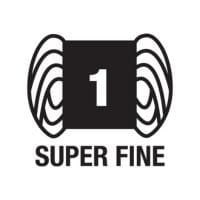
Symbol: Super Fine
Typical Yarns: Sock, fingering, baby
Fibers: Merino wool, cotton, alpaca, silk (often with nylon)
Characteristics: Fine but durable, great for colorwork
Needle Size (US): 1–3 (2.25mm–3.25mm)
Hook Size (US): B-1 to E-4 (2.25mm–3.5mm)
Gauge (4”/10cm): 27–32 stitches (knit), 21–32 stitches (crochet)
Best For: Socks, lightweight sweaters, baby clothes
Category 2: Fine Yarn Weight (Sport)
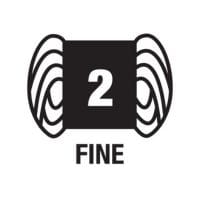
Symbol: Fine
Typical Yarns: Sport, baby
Fibers: Wool, cotton, acrylic, bamboo
Characteristics: Lightweight but warm, great for textured stitches
Needle Size (US): 3–5 (3.25mm–3.75mm)
Hook Size (US): E-4 to 7 (3.5mm–4.5mm)
Gauge (4”/10cm): 23–26 stitches (knit), 16–20 stitches (crochet)
Best For: Baby blankets, lightweight sweaters, socks
Category 3: Light Yarn Weight (DK/Light Worsted)
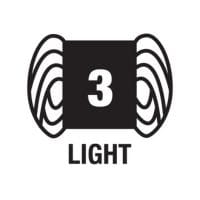
Symbol: Light
Typical Yarns: DK (Double Knitting), light worsted
Fibers: Merino, cotton, linen, acrylic
Characteristics: Versatile, balanced warmth and drape
Needle Size (US): 5–7 (3.75mm–4.5mm)
Hook Size (US): 7 to I-9 (4.5mm–5.5mm)
Gauge (4”/10cm): 21–24 stitches (knit), 12–17 stitches (crochet)
Best For: Sweaters, cardigans, lightweight blankets
Category 4: Medium Yarn Weight (Worsted/Aran)
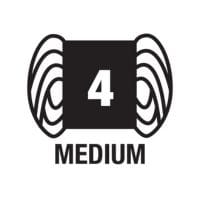
Symbol: Medium
Typical Yarns: Worsted, Aran, Afghan
Fibers: Wool, acrylic, cotton, alpaca
Characteristics: The “workhorse” yarn — durable and great for beginners
Needle Size (US): 7–9 (4.5mm–5.5mm)
Hook Size (US): I-9 to K-10½ (5.5mm–6.5mm)
Gauge (4”/10cm): 16–20 stitches (knit), 11–14 stitches (crochet)
Best For: Sweaters, blankets, scarves, hats
Category 5: Bulky Yarn Weight (Chunky)
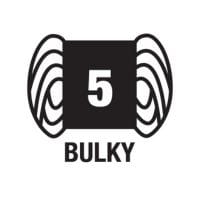
Symbol: Bulky
Typical Yarns: Chunky, craft, rug yarn
Fibers: Wool, acrylic, blends
Characteristics: Thick, warm, works up quickly
Needle Size (US): 9–11 (5.5mm–8mm)
Hook Size (US): K-10½ to M-13 (6.5mm–9mm)
Gauge (4”/10cm): 12–15 stitches (knit), 8–11 stitches (crochet)
Best For: Cozy sweaters, blankets, rugs
Category 6: Super Bulky Yarn Weight
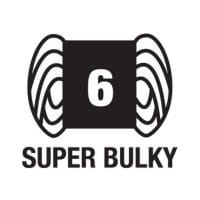
Symbol: Super Bulky
Typical Yarns: Super bulky, roving
Fibers: Merino, acrylic, polyester
Characteristics: Very thick, ultra-warm, great for arm knitting
Needle Size (US): 11–17 (8mm–12.75mm)
Hook Size (US): M-13 to Q (9mm–15mm)
Gauge (4”/10cm): 7–11 stitches (knit), 7–9 stitches (crochet)
Best For: Thick blankets, chunky scarves, arm-knitted projects
Category 7: Jumbo Yarn Weight (Roving)
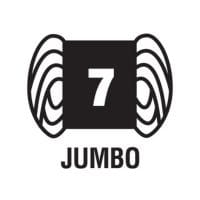
Symbol: Jumbo
Typical Yarns: Jumbo, roving
Fibers: Wool, acrylic, cotton
Characteristics: The thickest yarn — great for statement pieces
Needle Size (US): 17+ (12.75mm+)
Hook Size (US): Q+ (15mm+)
Gauge (4”/10cm): ≤6 stitches (knit & crochet)
Best For: Giant blankets, rugs, floor poufs
Decoding the Yarn Label
Yarn labels give essential details to help match your project to the right yarn weight:
- CYC Weight Symbol & Number (0–7)
- Fiber Content (wool, cotton, acrylic, etc.)
- Yardage & Weight
- Recommended Needle/Hook Size
- Gauge Information (stitches per 4 inches)
- Care Instructions
Fiber Content Matters
Even within the same yarn weight, fiber type changes the feel and performance:
- Animal Fibers (Wool, Alpaca, Silk) – Warm, elastic, great for garments
- Plant Fibers (Cotton, Linen, Bamboo) – Breathable, less stretchy, great for summer wear
- Synthetic Fibers (Acrylic, Nylon) – Durable, easy-care, budget-friendly
Quick Reference Table for Yarn Weights
| Symbol | Category | Needle (US) | Hook (US) | Gauge (4″) |
|---|---|---|---|---|
| 0 | Lace | 000–1 | B-1 | 33–40+ sts |
| 1 | Super Fine | 1–3 | B-1 to E-4 | 27–32 sts |
| 2 | Fine | 3–5 | E-4 to 7 | 23–26 sts |
| 3 | Light | 5–7 | 7 to I-9 | 21–24 sts |
| 4 | Medium | 7–9 | I-9 to K-10½ | 16–20 sts |
| 5 | Bulky | 9–11 | K-10½ to M-13 | 12–15 sts |
| 6 | Super Bulky | 11–17 | M-13 to Q | 7–11 sts |
| 7 | Jumbo | 17+ | Q+ | ≤6 sts |
Final Tips for Working with Yarn Weights
- Always match yarn weight to your pattern.
- Consider fiber content for drape, warmth, and care.
- Check WPI (Wraps Per Inch) if the label is missing.
- Swatch first to confirm gauge before starting.
Mastering yarn weights will make it easier to choose the perfect yarn, substitute with confidence, and create projects that turn out exactly as intended. If you want to expand your knowledge further, check out our beginner-friendly yarn terms guide to learn the lingo used in patterns, labels, and the yarn community.


